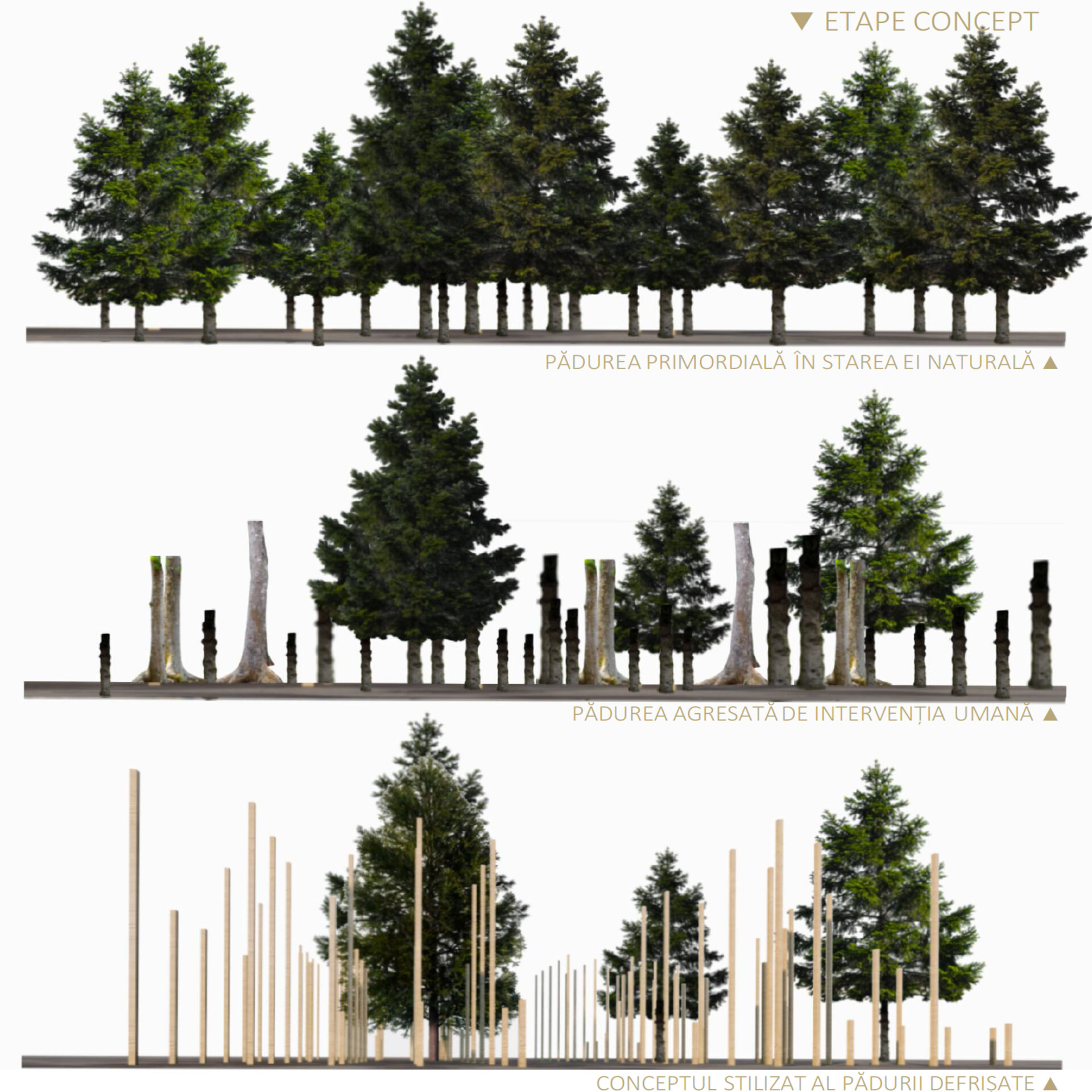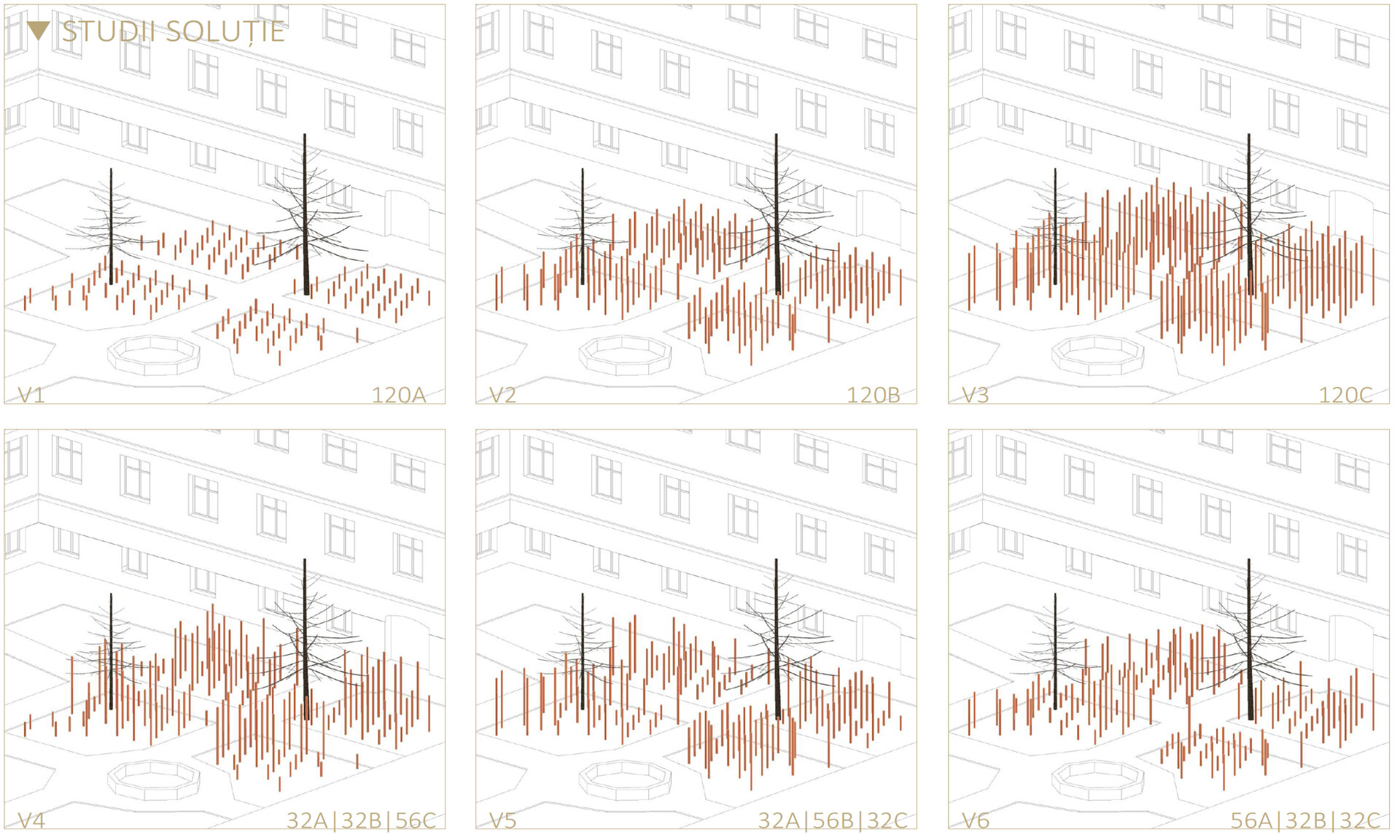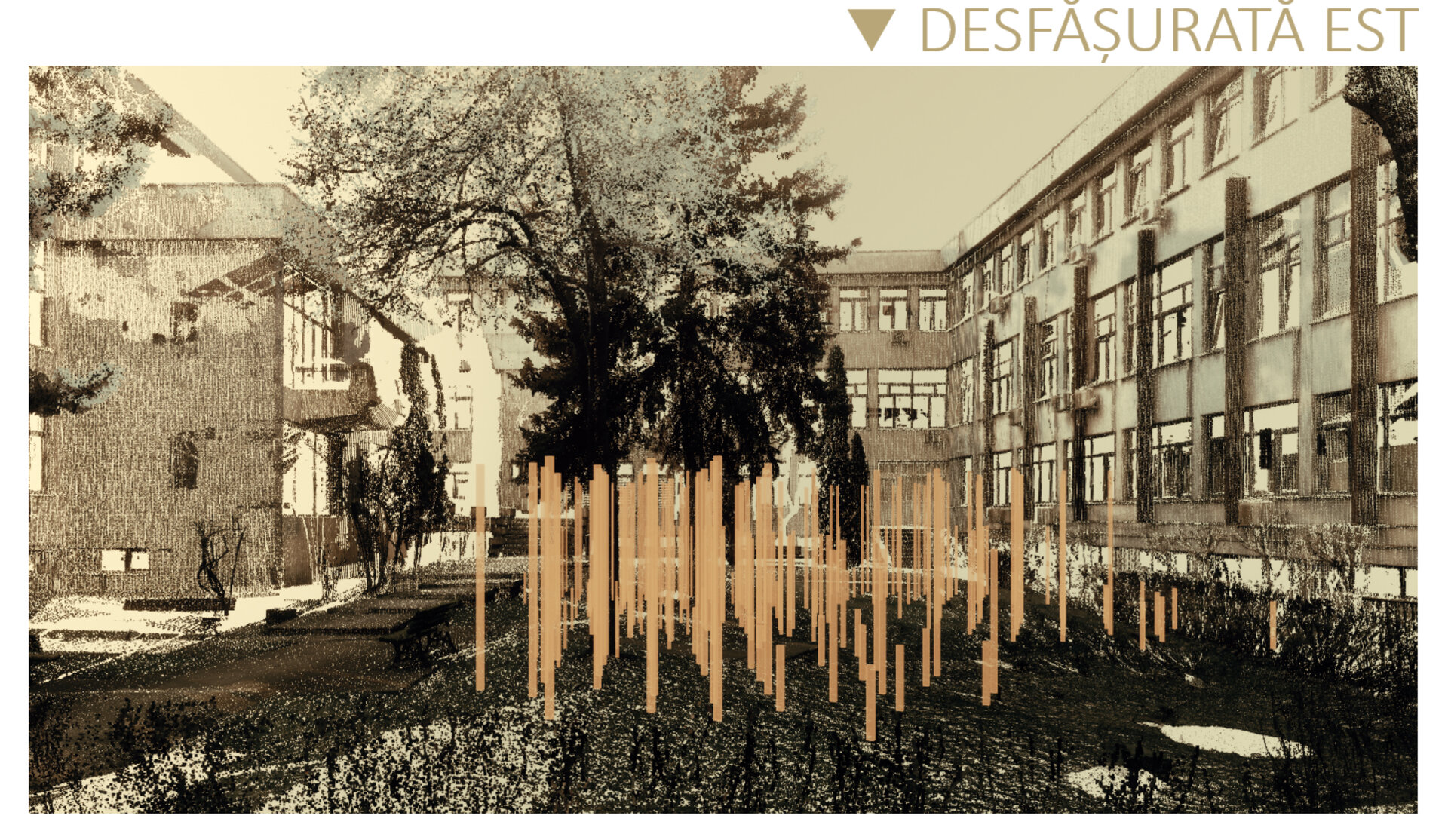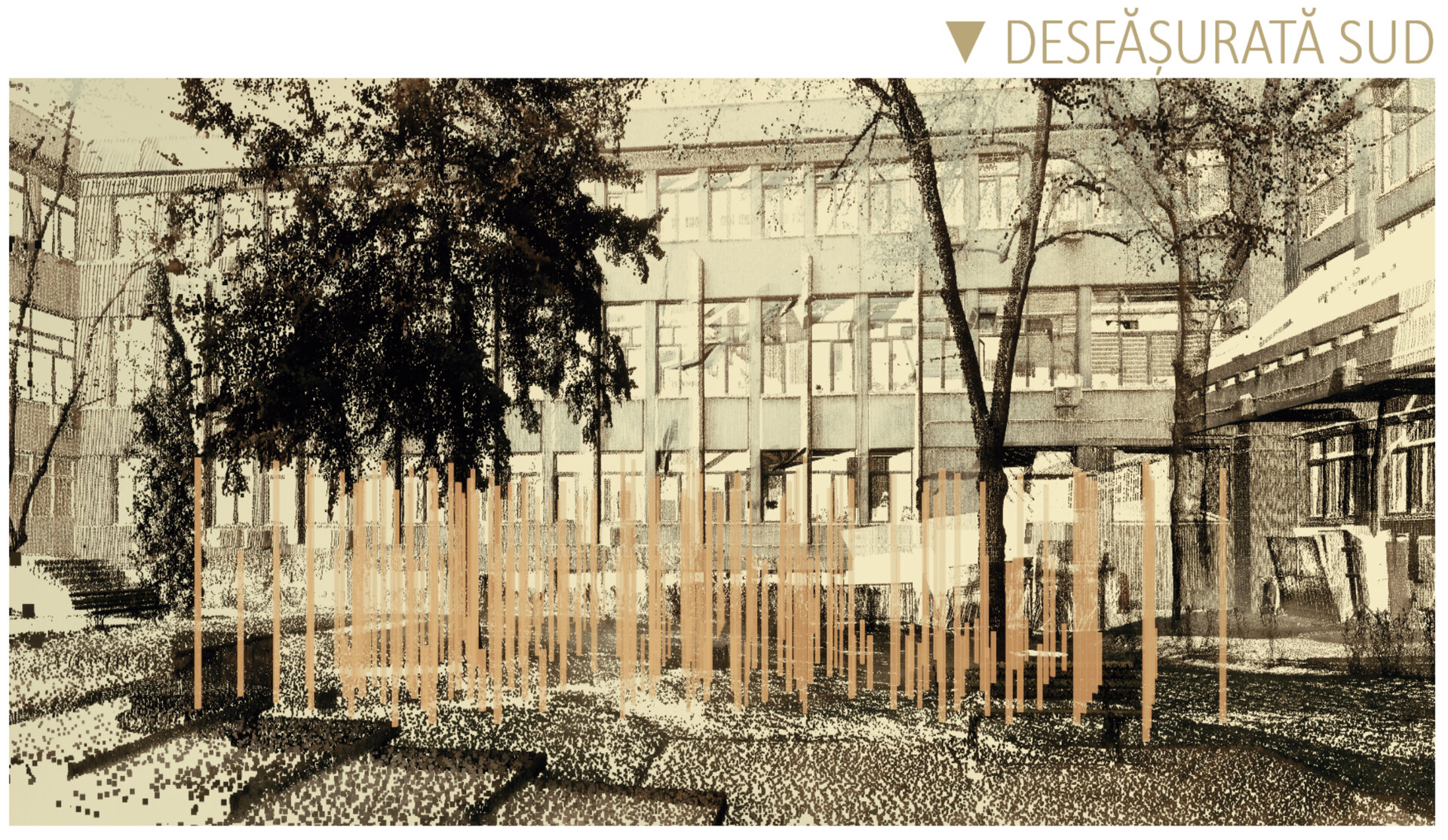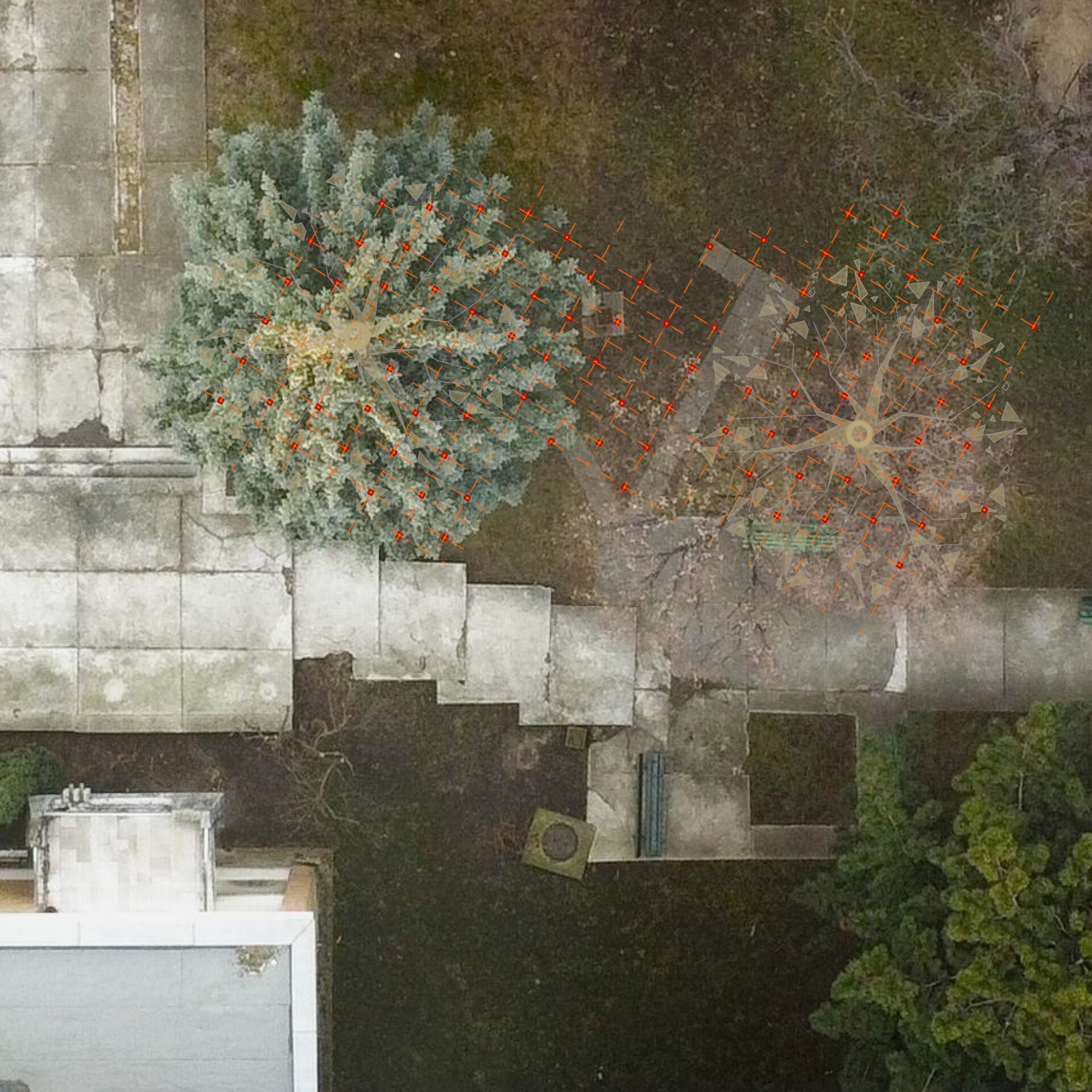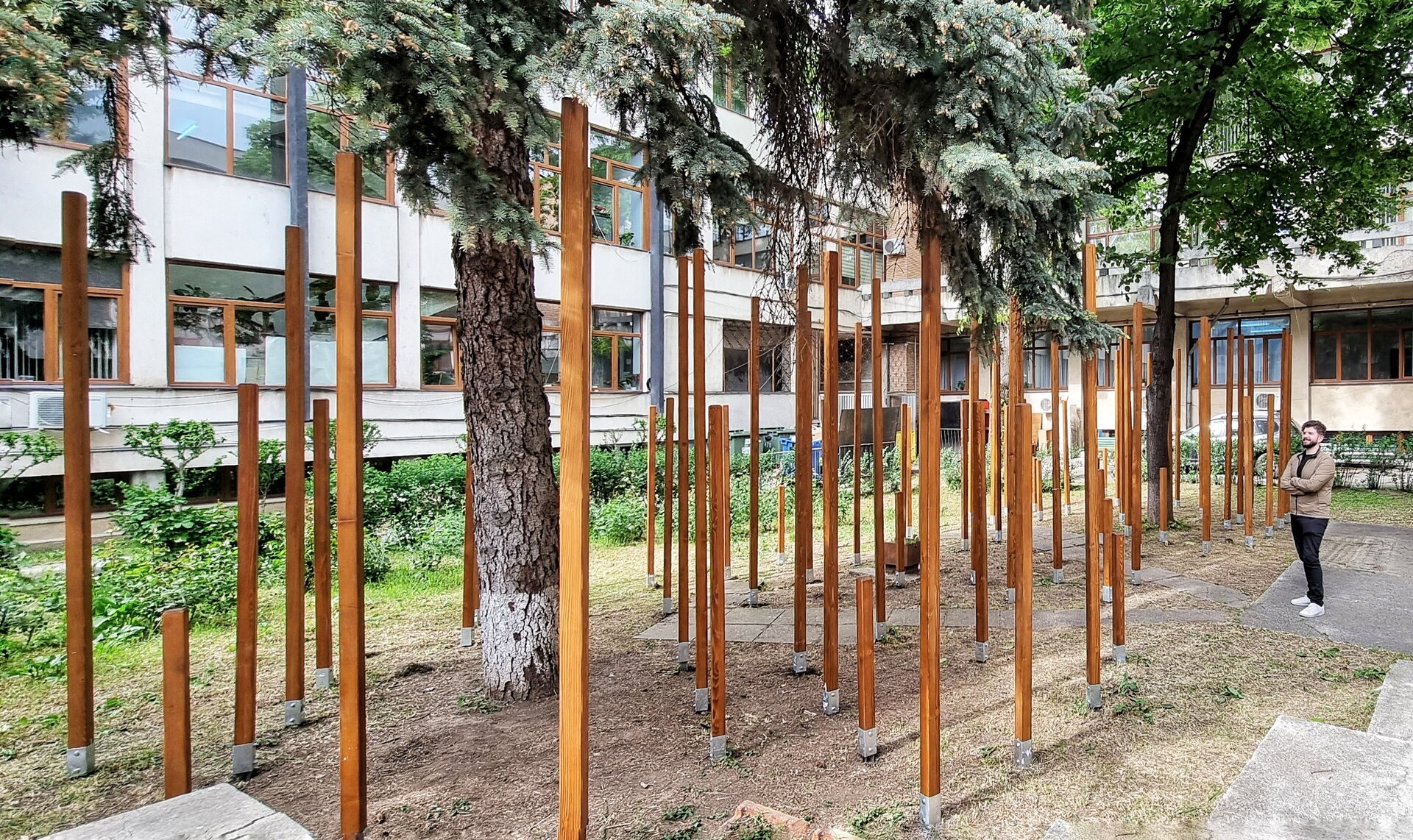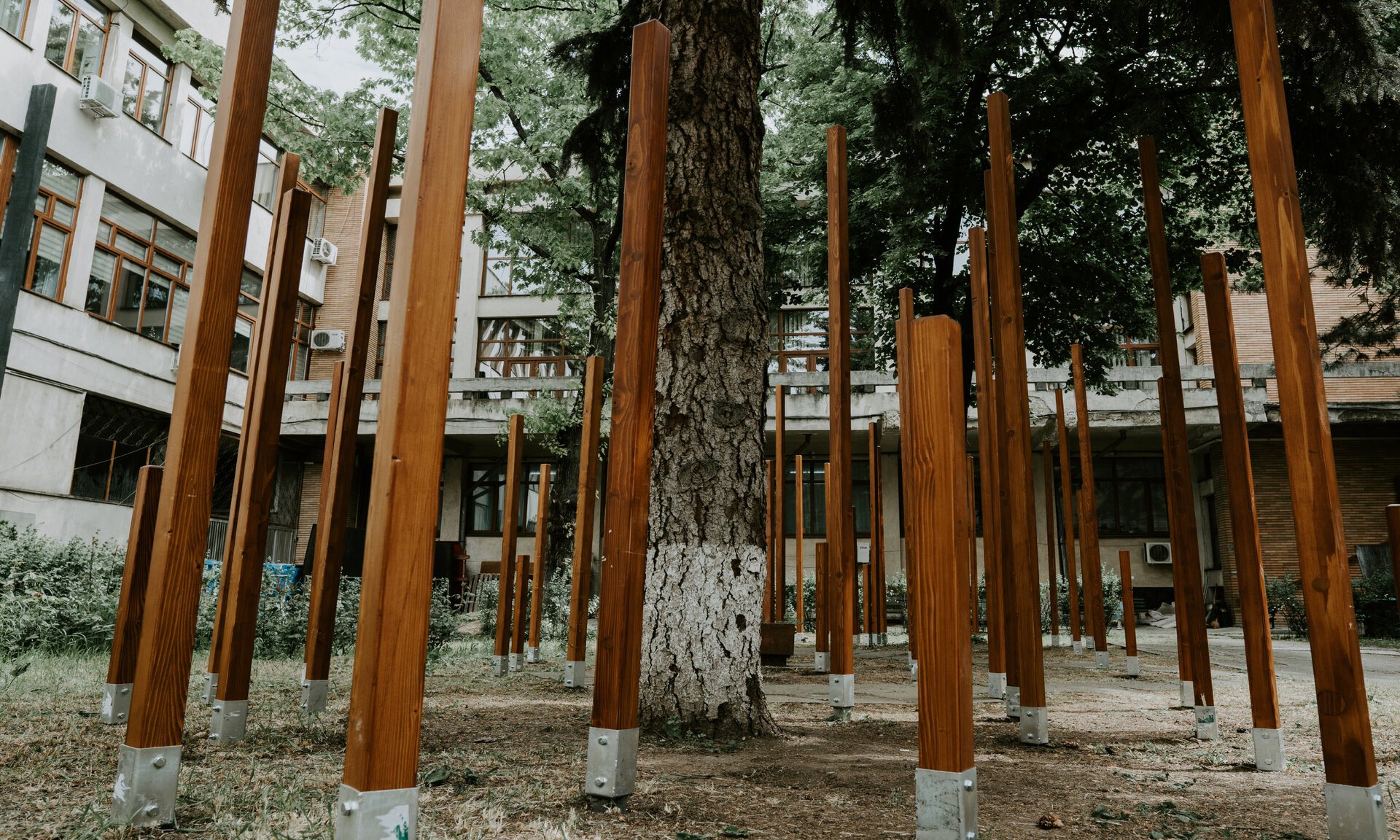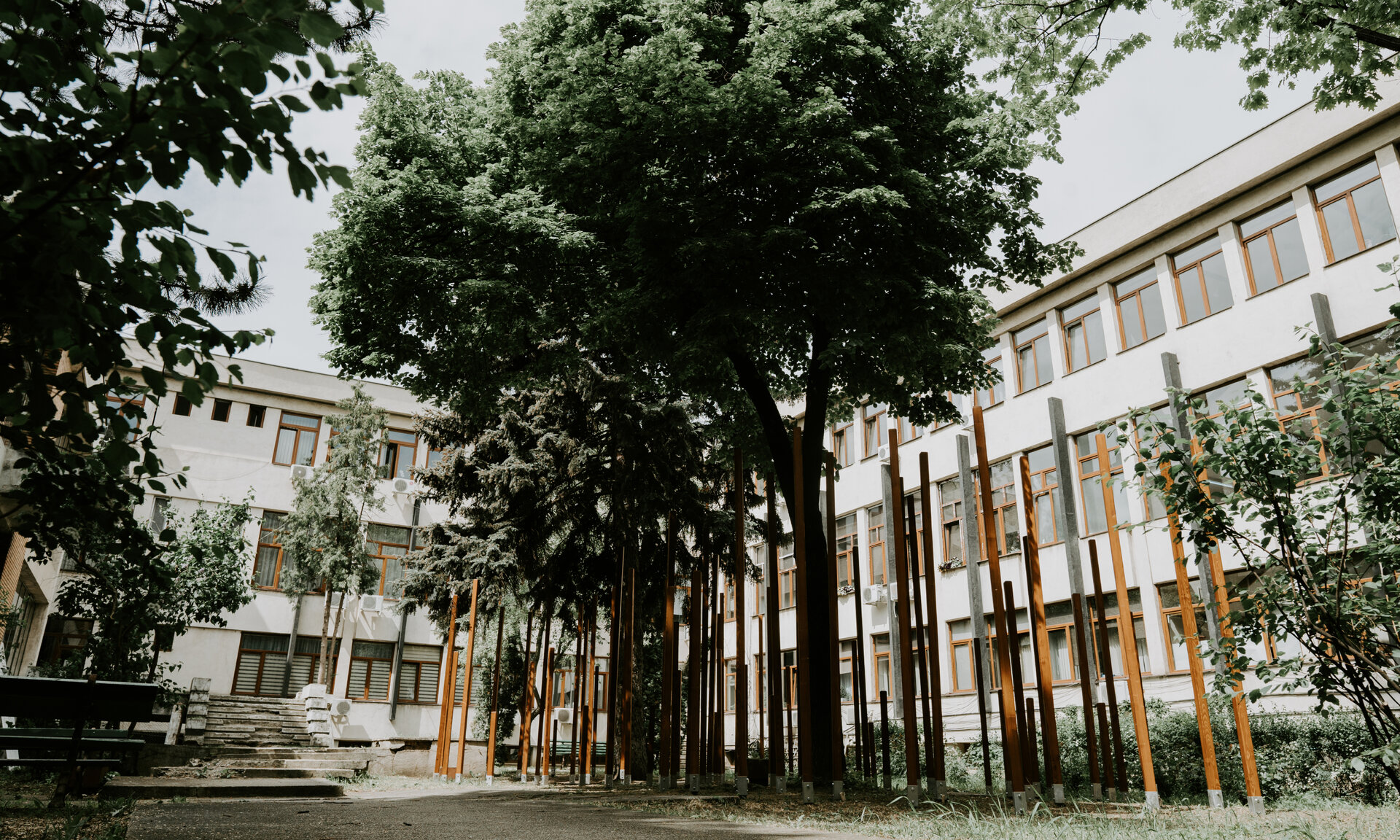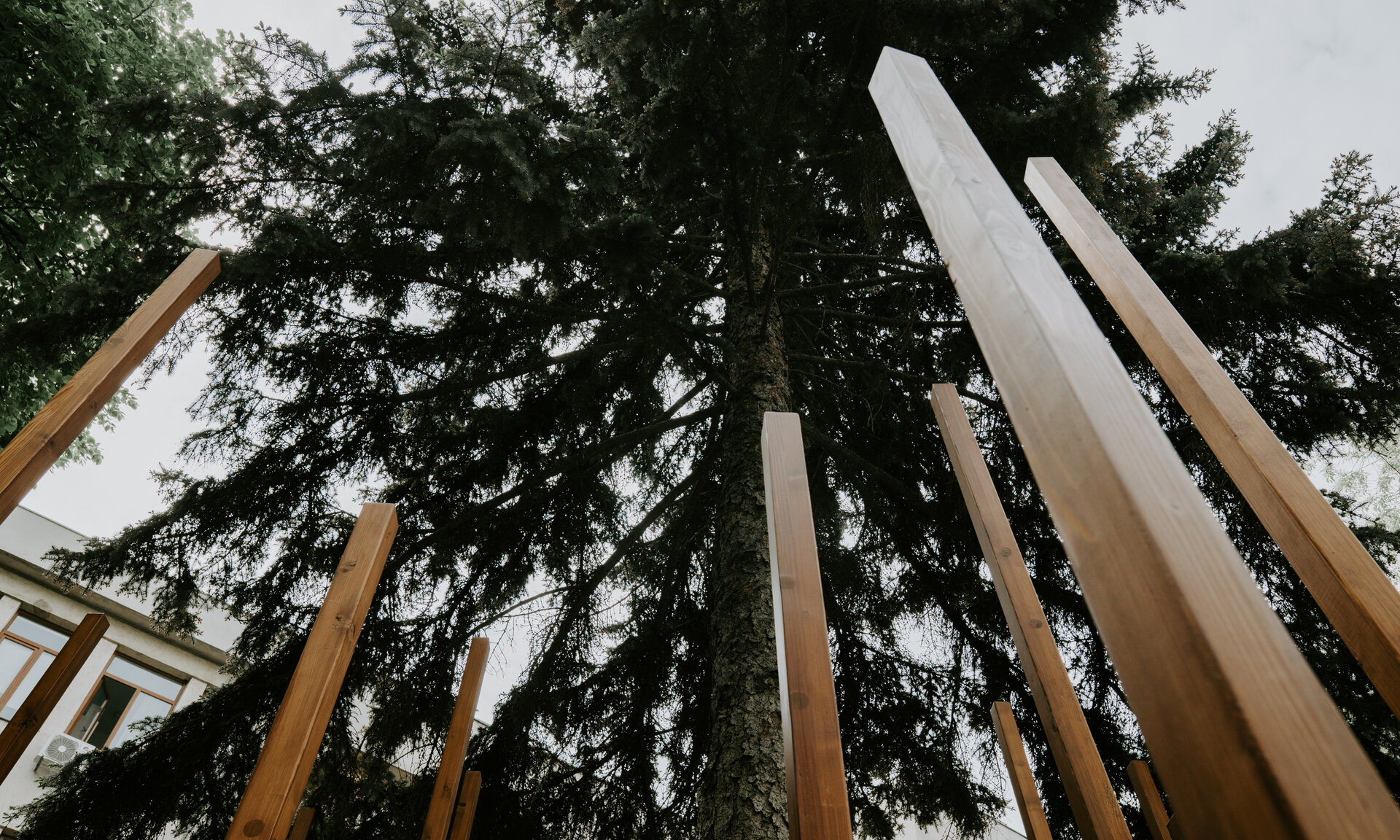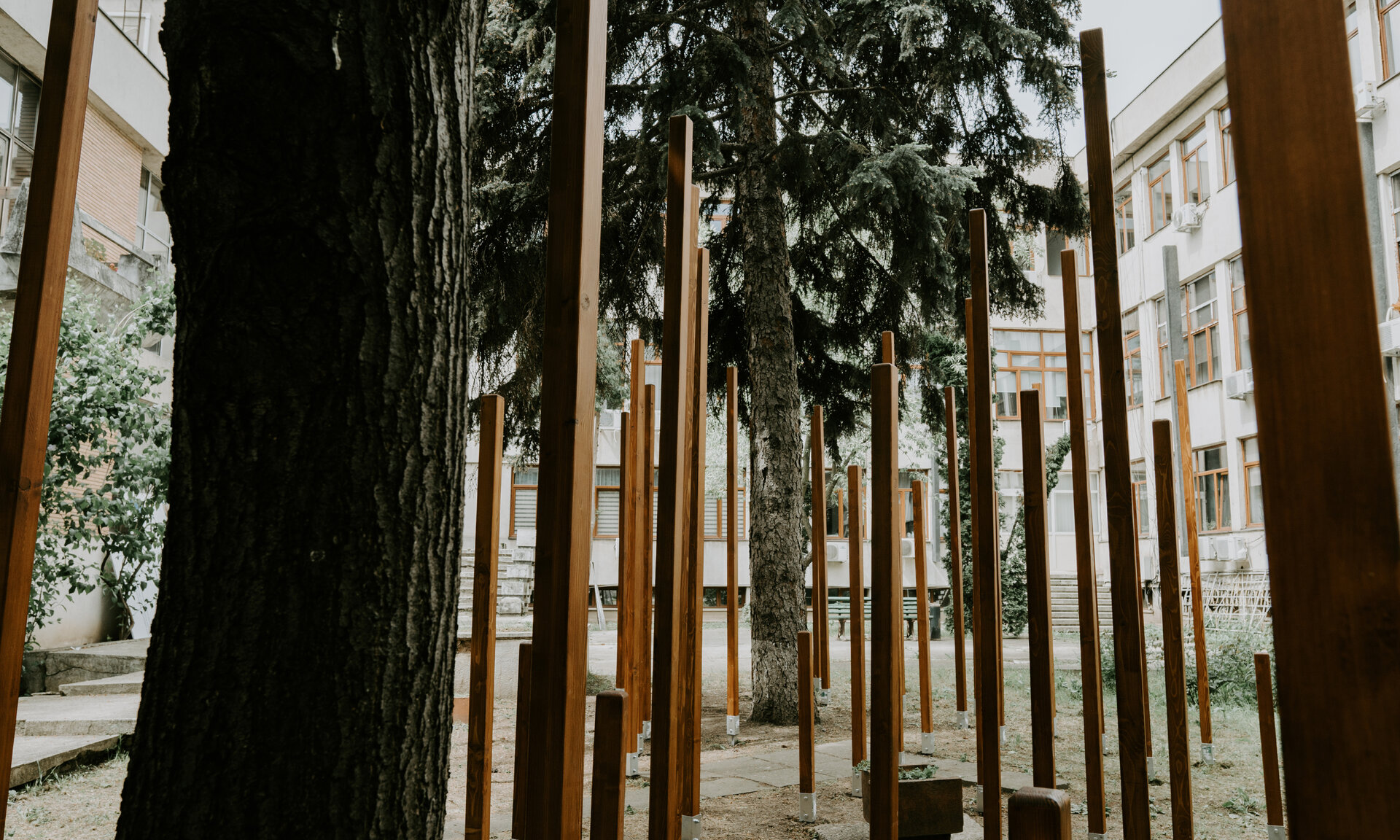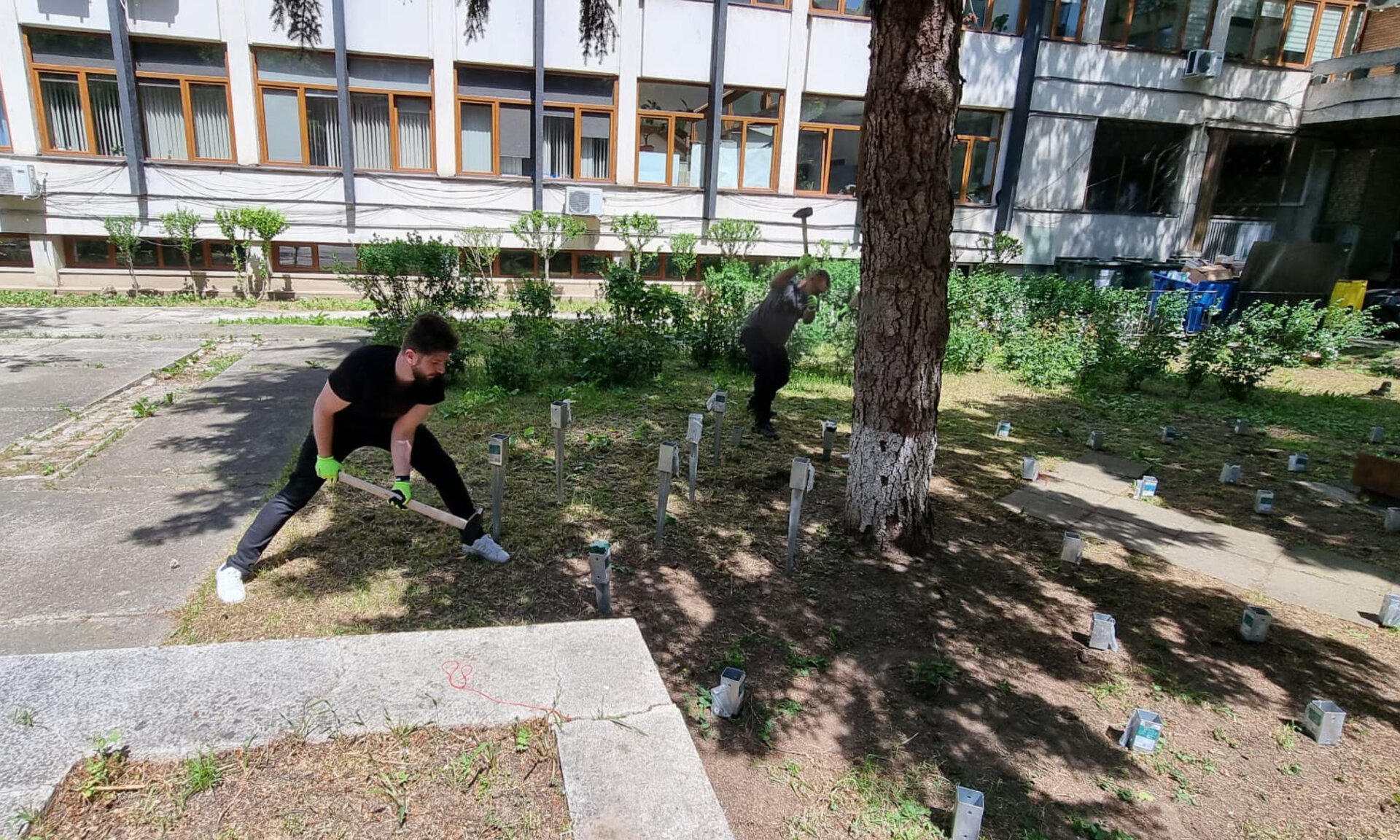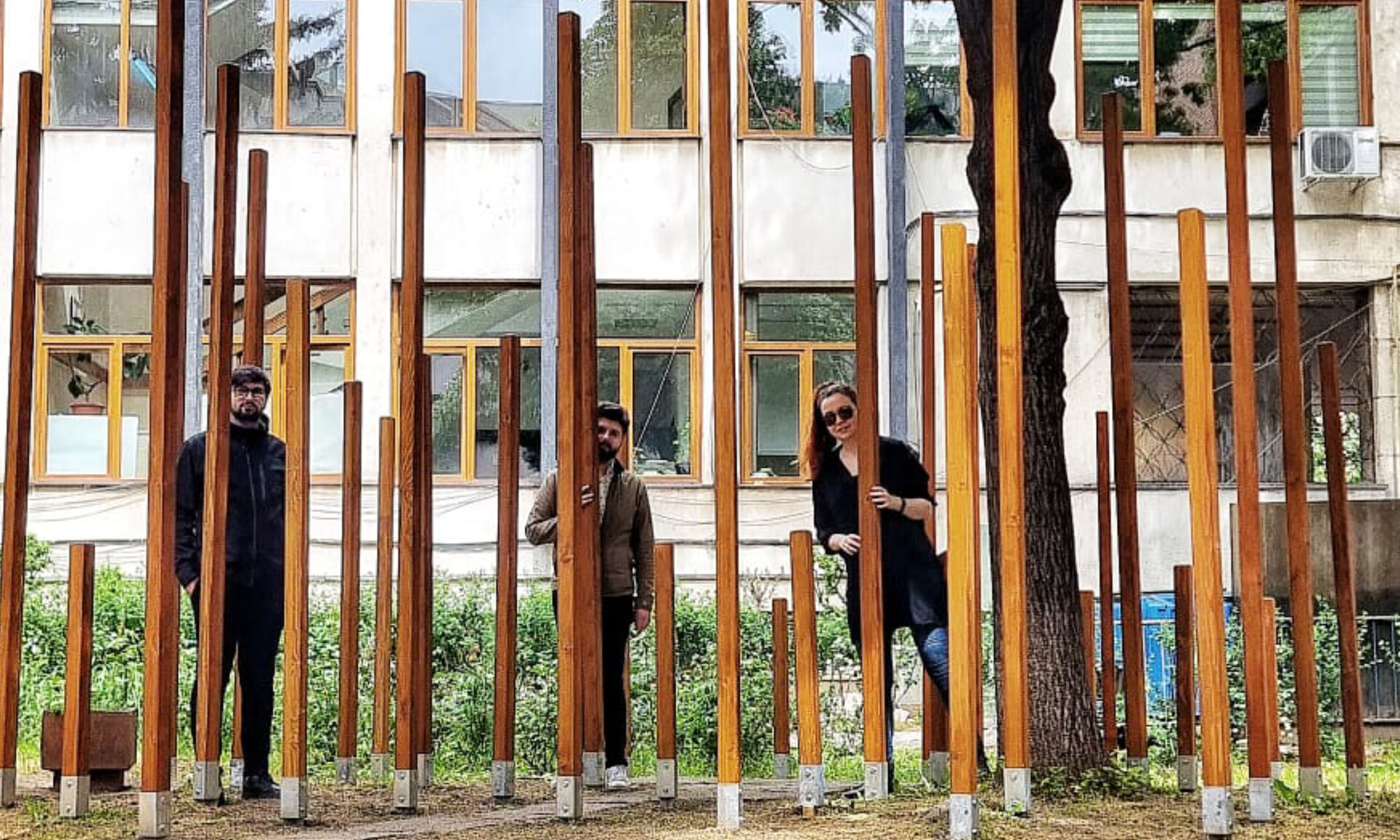
The loneliness of the revenant trees: anti-deforestation manifesto
Authors’ Comment
The Iasi Prefecture's courtyard (Casa Pătrată) is a consequence of a rules-based approach, but the atmosphere it conveys is not one familiar to a human space. The austere building, plagued by contemporary interventions and stripped of its Garden status by recent deforestation, reveals a desolate site that seeks its identity, following its need for "presence" and "origin". The trees providentially saved from felling exude the same incomprehensible force that accompanies the ruins of vanished civilizations: they continue to evoke truths, in the void, unheard.
The proposed installation is a message about lost values, and about how we can (still) recover lost worlds, about a deeper sense of using a space. The objects define a topos of returning to the archetypal forest. Their scale and materiality suggest deforestation and loss. They may transform the vague space of the courtyard into architecture and use elements of language specific to architectural discourse, but they remain undeniably symbols of a dysfunctional world. They are essentialized because they speak of a nature in agony, victim of the consumerist rush, which glorifies gain at any cost. This is why the constituent elements are simple, raw, without the technological value of contemporaneity. With a sigh, they clarify, give meaning to the space around them. The wooden posts create sub-spaces, generate paths, open or close perspectives, encipher meaning.
The repetition of similar shapes creates an almost scenographic rhythm, which highlights the only remaining untouched tree, a small living universe, rebellious, defiant.
The plot generates the boundaries of a transitory space, a matrix of the archetypal forest, where the laws of nature are exercised according to a miniature system, inviting the viewer/exhibitor to meditation and conversation. The essentialised reduction of plant wealth to a simple vertical symbol is a gesture of reverence that invites introspection and the basal needs of the human being. In a world where walking in nature has become therapeutically prescribed to counteract the informational assault and nervous exhaustion caused by the stimuli of contemporary society, the abstract clearing inserted in the courtyard is a paradox that draws attention to the fundamental values of the world. On a deeper level, the spatially developed vertical wooden grid invites the exploration of a metaphor of the forest, that "silent and secret refuge where man hid and where the gods made their home."
The architectural installation was featured in the Architecture Festival "Iasi opens its courtyards" organized by Oar Iași, being among the awarded projects selected to be realized.
- Space for Solidarity – pilot project
- A Place to Catch One’s Breath- București
- Drăgaica Garden (peri)urban regeneration intervention
- Heritage landscape regeneration of the Peleș Domain
- As above, so below
- Acces Amestec Festival - “Touch the sky”
- Biutiful Exhibition Pavilion
- The loneliness of the revenant trees: anti-deforestation manifesto
- Skytower Urban Garden
- Mirror Your Community Installation
- Urban Metamorphosis - Navigating the labyrinth of change
